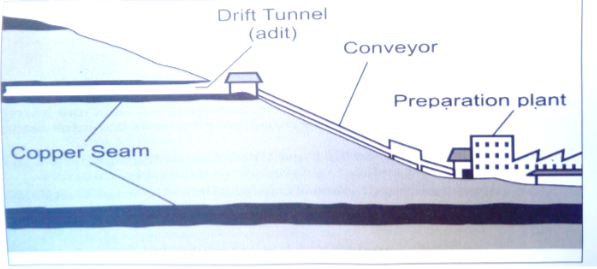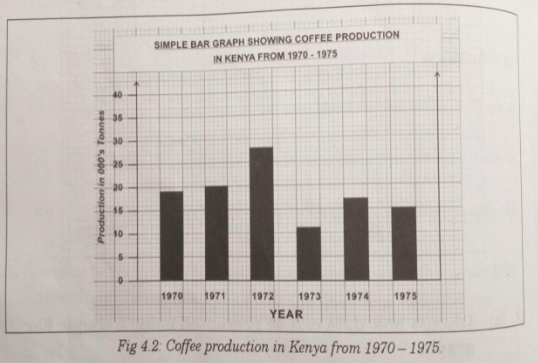- Define the following terms;
- Geography – (2 marks)
- Environment – (2 marks)
- Identify four reasons for studying Geography. (4mks)
- Explain the relationship between Geography and the following disciplines.
- Economics; (2mks)
- Medicine; (2mks)
- Explain the origin of the earth and the solar system using the passing star theory. (5mks)
-
- Give three reasons why the Earth’s interior is hot. (3mks)
- Name two types of earth movements. (2mks)
-
- Describe three proofs that the earth is Spherical. (3mks)
- )What is the effect of International Date Line on time? (2mks)
- The table below represents rainfall and temperature figures for station in Africa. Use it to answer the following questions.
Month Jan Feb Mar Apr May Jun Jul Aug Sep Oct Nov Dec Temp °C 27 28 28 28 27 25 25 24 25 26 27 26 Rainfall: (mm) 25 38 99 140 277 439 277 69 142 201 71 25 - Calculate annual range of temperature for the town. (2mks)
- Calculate the total annual rainfall for the town. (2mks)
- State any three conditions necessary for the formation of dew. (3mks)
- Name three instruments found in a Stevenson screen. (3mks)
- State the necessary conditions considered when siting a weather station. (3mks)
- Name three methods of weather forecasting. (3mks)
- List six factors that influence the temperature of a place. (6mks)
- Give two types of statistical data. (2mks)
- The table below shows coffee production in Kenya from 1970 to 1975 in 000’s tones.
Year: 1970 1971 1972 1973 1974 1975 Tonnage in 000’s 19 20 28 11 17 15 - Draw a simple bar graph to represent the above data. (8mks)
- State three advantages of simple bar graph. (3mks)
- Identify three types of scale. (3mks)
- Identify basic marginal information found on a map. (3mks)
- What is the importance of work schedule? (4mks)
-
- State two characteristics of Minerals. (2mks)
- Name three major types of rocks. (3mks)
-
- Define mining. (2 mks)
- State formations in which Minerals occur. (2mks)

- Identify method of mining shown above. (1mk)

MARKING SCHEME
- Define the following terms;
- Geography – Is the scientific study of the Earth as the home of mankind.
- Environment – Environment is the external conditions that surround a plant or an animal.
- Identify four reasons for studying Geography. (4mks)
- Geography is a career subject
- It encourages international awareness and cooperation.
- It teaches learners on how to manage time properly by drawing time schedules.
- It teaches the leaner different methods of collecting and presenting geographical information.
- Geography is a career subject
- Describe the relationship between Geography and the following disciplines.
- Economics; Economics deals with the production and consumption of resources while Geography deals with distribution and exploitation of natural resources. (2mks)
- Medicine; Medicine deals with presentation, diagnosis and curing of diseases whereas Geography determines distribution of diseases, factors influencing their spread. (2mks)
- Explain the origin of the earth and the solar system using the passing star theory. (5mks)
- According to this theory, the earth formed about 4600 million years ago when a star of a greater gravitational pull passed near the sun.
- It drew off a stream of gaseous materials from the sun. The materials split, cooled and condensed forming planets. Heavier materials collected at the centre forming the core, less dense materials formed the mantle, the highest materials formed the crust.
- The moon asteroids and other objects in space formed in a similar manner.
- According to this theory, the earth formed about 4600 million years ago when a star of a greater gravitational pull passed near the sun.
-
- Give reasons why the Earth’s interior is hast. (3mks)
- The slow process of cooling in interior of the earth allowed retention of most of original heat.
- Radio-activity process in the underlying materials that releases heat which is retained within the interior.
- Weight of overlying crystal materials that exerts pressure which generates heat in the interior.
- The slow process of cooling in interior of the earth allowed retention of most of original heat.
- Name two types of earth movements. (2mks)
- Rotation
- Revolution
- Rotation
- Give reasons why the Earth’s interior is hast. (3mks)
-
- Describe three proofs that the earth is Spherical. (3mks)
- Ciramnavigation
- The mast of an approaching ship is seen first.
- The earth’s horizon is curved
- All other planets are spherical hence Earth
- Satellite photographs
- Ciramnavigation
- What is the effect of International Date Line on time? (2mks)
- It causes time changes by 24 hours or a day when crossed.
- When crossed Eastwards, a day is gained while when crossed Westwards, a day is lost.
- It causes time changes by 24 hours or a day when crossed.
- Describe three proofs that the earth is Spherical. (3mks)
- The table below represents rainfall and temperature figures for station in Africa. Use it to answer the following questions.
- Calculate annual range of temperature for the town. (2mks)
Annual range temperature; = Highest temp. – Lowest temp
28°c- 24°c
= 4°c - Calculate the total annual rainfall for the town. (2mks)
25+38+99+140+277+439+277+69+142+201+71+25 = 1803 mm
- Calculate annual range of temperature for the town. (2mks)
- State any three conditions necessary for the formation of a dew. (3mks)
- The air should be calm enough to remain in contact with objects on the ground.
- Daytime should be warm to accelerate evaporation.
- There should exist a cloudless night for high rate of terrestrial radiation to occur.
- Name three instruments found in a Stevenson screen. (3mks)
- Hygrometer
- Six’s thermometer
- Maximum & Minimum thermometer
- State the necessary conditions considered when siting a weather station. (3mks)
- Should be located on an open place
- Land should be relatively flat
- Areas should be free from flooding
- Should be secure
- Should have less or no vegetation
- Name three methods of weather forecasting. (3mks)
- Ancient method
- Weather lore method
- Modern method
- Highlight factors that influence weather and climate. (4mks)
- Latitude
- Altitude
- Distance from large water bodies
- Aspect
- ITCZ
- Cloud cover
- Air currents
- Human activities
- Discuss two types of statistical data. (4mks)
- Primary data: These are facts and figures collected first hand from field. The information collected is not yet documented.
- Secondary data: These are already collected and documented facts and figures found in text books, statistical abstracts, census reports, journals.
- The table below shows coffee production in Kenya from 1970 to 1975 in 000’s tones.
- Draw a simple bar graph to represent the above data. (8mks)

- State three advantages of simple bar graph. (3mks)
- They are easy and straight forward to draw.
- They clearly show individual amounts and contrast in values.
- The bars give a clear visual impression which appeals to the eye.
- Draw a simple bar graph to represent the above data. (8mks)
- Identify three types of scales. (3mks)
- Linear scale
- Statement scale
- Representative fraction (R.F) scale
- Identify basic marginal information found on a map. (2mks)
- Title of the map
- The scale
- The compass direction
- The key
- The frame of the map
- Magnetic variation
- What is the importance of work schedule? (5mks)
- It provides estimates on total time required for the study
- It allocates each activity ample time
- It reduces tendency to waste time over one activity at the expense of others
- It forms a basis for field work evaluation while in progress
- It acts as guiding framework for research activity
-
- State two characteristics of Minerals. (2mks)
- They have crystal form
- Some of minerals are unique
- Minerals have varying specific hardness
- Minerals have different specific densities
- Name three types of rocks. (3mks)
- Igneous rocks
- Sedimentary rocks
- Metamorphic Rocks
- State two characteristics of Minerals. (2mks)
-
- Define mining. (2 mks)
- This refers to extraction of valuable solid, liquid or gaseous minerals from the earth’s crust.
- State forms in which Minerals occur. (2mks)
- Veins and lodes
- Seams and lapers or beds
- Weathering products
- Allurial deposits / placer
- Identify method of mining shown above. (1mk)
- Drift or Adit method of mining
- Define mining. (2 mks)
Join our whatsapp group for latest updates
Tap Here to Download for 50/-
Get on WhatsApp for 50/-
Download Geography Questions and Answers - Form 1 End Term 3 2022 Exams.
Tap Here to Download for 50/-
Get on WhatsApp for 50/-
Why download?
- ✔ To read offline at any time.
- ✔ To Print at your convenience
- ✔ Share Easily with Friends / Students

